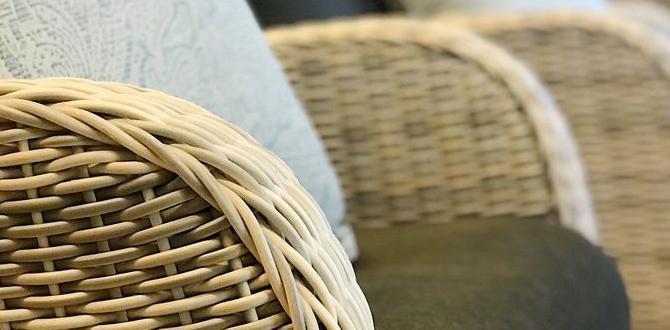Have you ever thought about turning your kitchen scraps into garden gold? Composting at home for gardening is not just easy; it’s also rewarding! Picture this: instead of throwing away your vegetable peels and coffee grounds, you can create rich soil that helps your plants grow strong. Sounds exciting, right?
Many people don’t realize how composting benefits both the environment and their gardens. By composting at home, you reduce waste in landfills while making your garden thrive. It’s like a magic trick where trash turns into treasure!
So, how do you get started? It might seem tricky, but you’ll be surprised at how simple it really is. In this article, we’ll explore easy steps and tips for composting at home. Get ready to learn and unleash your inner gardener!
How To Compost At Home For Gardening: A Simple Guide
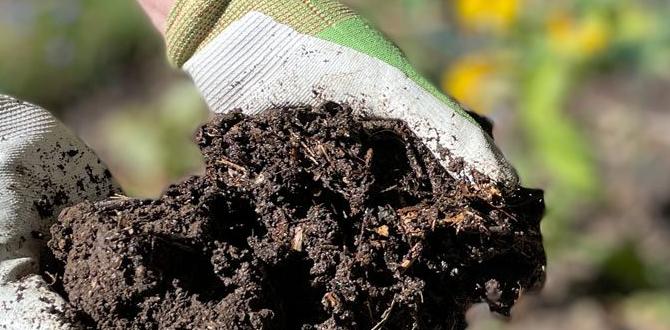
How to Compost at Home for Gardening
Composting at home is simple and exciting! It helps reduce waste while creating rich soil for your garden. Start with kitchen scraps like fruit peels, eggshells, and coffee grounds. Add yard waste such as leaves and grass clippings. Did you know that bacteria and worms make compost? They break down materials into nutrient-rich food for plants. By composting, you not only help the Earth but also grow healthier plants. Why not give it a try? Your garden will thank you!Understanding Composting Basics
Definition of composting. Importance of composting for gardening.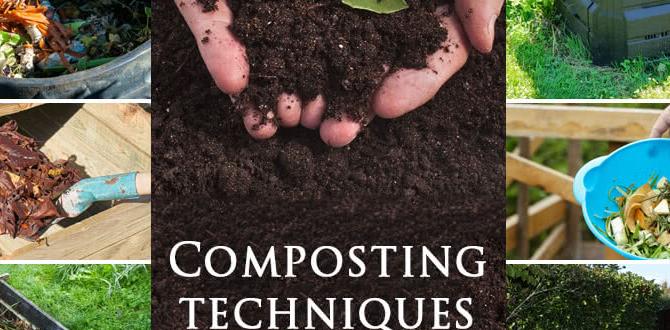
Composting is like making a super smoothie for soil. You mix food scraps, yard waste, and nature’s magic to create nutrient-rich compost. Why does this matter for gardening? Well, good compost helps plants grow strong and healthy. Think of it as a delicious meal for your garden. Studies show that compost can boost plant growth by up to 30%! How about that? Plus, it reduces waste and helps the planet. So, it’s a win-win! Who doesn’t want happy plants and less trash?
| Benefits of Composting |
|---|
| Nutrient-rich soil |
| Reduces waste |
| Helps the environment |
| Supports plant health |
Benefits of Composting at Home
Enhancing soil fertility. Reducing kitchen and yard waste.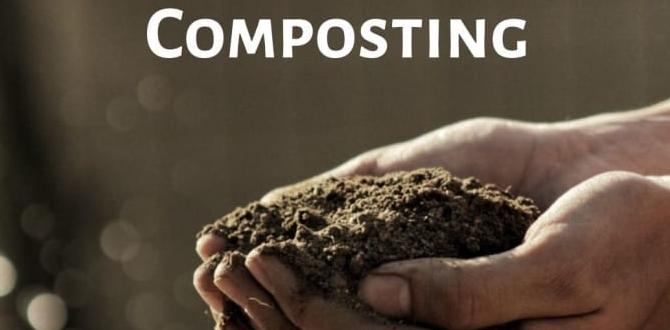
Composting at home offers two big benefits. First, it enhances soil fertility. Healthy compost adds nutrients to the soil, helping plants grow strong and vibrant. Next, it reduces kitchen and yard waste. Instead of throwing scraps in the trash, you can turn them into rich soil. This saves space in landfills and helps the planet.
What are the benefits of composting?
Composting enriches the soil and cuts down on waste. It’s a simple, eco-friendly way to help your garden thrive.
- Boosts plant health
- Reduces garbage
- Saves money on fertilizer
- Supports the environment
What Materials Can Be Composted?
Green materials (nitrogenrich). Brown materials (carbonrich).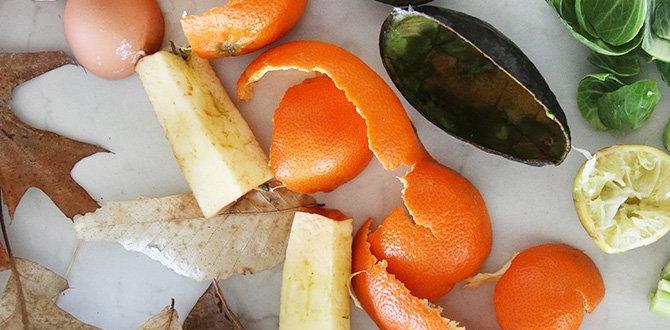
Composting is like making a delicious smoothie, but instead of fruits and veggies, we use scraps! Two main types of materials are needed: green and brown. Green materials, like grass clippings and fruit peels, are rich in nitrogen. They are the energetic friends in your compost pile. On the other hand, brown materials, such as dry leaves and cardboard, bring carbon to the party. They help balance things out and prevent a stinky mess. Aim for a mix of both for happy compost!
| Green Materials (Nitrogen-Rich) | Brown Materials (Carbon-Rich) |
|---|---|
| Fruit peels | Dry leaves |
| Grass clippings | Cardboard |
| Vegetable scraps | Pine needles |
| Coffee grounds | Paper (shredded) |
Setting Up Your Composting System
Choosing the right compost bin or pile location. Selecting the appropriate compost bin type.Finding a good spot for your compost is key. Look for a shady area close to your garden. This keeps moisture in and makes it easy for you to reach. Next, consider what type of bin you want. Here are some options:
- Bin with a lid: This keeps pests away.
- Open pile: Good for large amounts. It’s simple!
- Worm composting bin: Great for small spaces.
Choose what fits your needs best. Starting to compost can be fun and easy!
What should I consider when choosing a compost bin?
Think about size, location, and pest control. A larger bin can handle more waste, but smaller bins are easier to manage.
Steps to Start Your Compost Pile
Layering materials correctly. Maintaining the right moisture levels.
Starting your compost pile is fun and easy! First, layer your materials like a tasty lasagna. Begin with coarse items like twigs, then add kitchen scraps like veggie peels and coffee grounds. Keep it balanced between green (wet) and brown (dry) materials. Next, find just the right amount of moisture. Your pile should be as moist as a wrung-out sponge, not a swimming pool! Remember to turn your pile every few weeks. This gets the air in and makes those worms happy!
| Layer Type | Examples |
|---|---|
| Green | Veggie scraps, grass clippings |
| Brown | Dry leaves, cardboard |
Managing Your Compost Pile
Turning and aerating the compost. Monitoring temperature and moisture.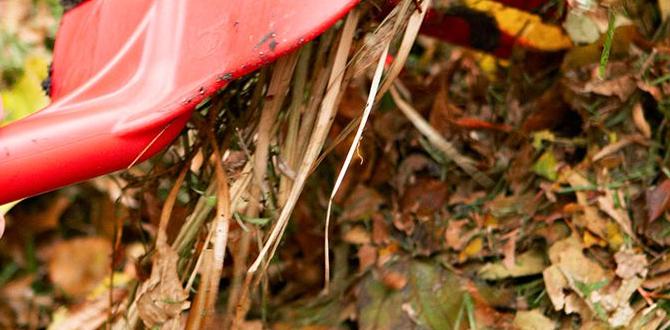
Got a compost pile? Time to show it some love! Turn it regularly to let in air. This helps keep it fresh and speedy, like a race car, zooming toward becoming rich soil! Monitor the temperature—if it’s hot, that’s good! It means things are cooking. Aim for a cozy range of 130°F to 160°F. Keep it moist too; think of it as the Goldilocks zone—not too wet, not too dry! Use this handy table to check your compost care:
| Action | Frequency |
|---|---|
| Turn the compost | Every 1-2 weeks |
| Check temperature | Weekly |
| Water if needed | Every 2-4 weeks |
Taking care of your compost is easier than finding a needle in a haystack—plus, it’s way more fun!
Sustainable Practices for Successful Composting
Using composting worms (vermicomposting). Avoiding common composting mistakes.
Using composting worms can make your compost better. These worms break down food scraps quickly. They help create nutrient-rich soil for your garden. To avoid problems, follow some simple tips:
- Don’t add meat or dairy. They attract pests.
- Keep it moist, like a sponge, not soggy.
- Mix materials well. This helps air flow.
Composting is easy when you follow these steps. Happy gardening!
What are common composting mistakes?
Many people add the wrong items, like plastic or oils. Others let it get too dry or too wet. Keeping a good balance is key to making great compost.
When is Compost Ready to Use?
Signs of finished compost. How to test compost readiness.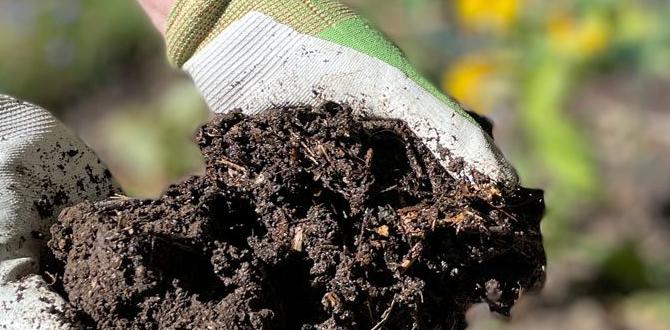
Finished compost looks dark, crumbly, and rich in texture. It should smell fresh, like earth after rain. You can check for readiness by:
- Looking for a uniform color.
- Testing for an earthy smell.
- Feeling its crumbly texture.
If you see worms, that’s a good sign too. Remember, it usually takes three to six months for compost to be ready. Using it makes your garden thrive!
How to know if compost is ready?
Check for color, smell, and texture. If it looks like dark soil, smells good, and feels crumbly, you are good to go!
Using Compost in Your Garden
Best practices for applying compost. Benefits of incorporating compost into garden beds.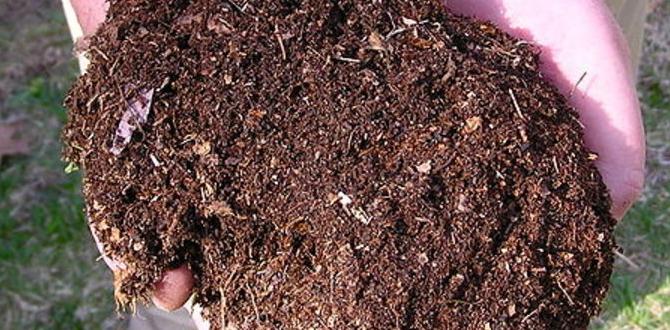
Adding compost to your garden is like giving a tasty meal to a hungry plant. Start by spreading it evenly around the base of your plants. A layer about 2 to 3 inches thick works wonders. Compost improves soil structure and helps retain moisture, making your plants happier. Plus, it brings beneficial microbes that munch away at soil problems. Who knew worms could be such helpful gardening buddies? Keep compost away from plant stems to avoid rot, and water your garden after adding it for the best results!
| Benefit | Explanation |
|---|---|
| Improved Soil | Compost enriches the soil with nutrients. |
| Water Retention | Helps soil hold moisture longer. |
| Healthy Plants | Supports plant growth and resistance to disease. |
Conclusion
In conclusion, composting at home is easy and rewarding for gardening. You can use kitchen scraps and yard waste to create rich soil. Remember to balance greens and browns and keep it moist. We encourage you to start your own compost bin today. For more tips, check out local resources or books on composting. Happy gardening!FAQs
What Materials Can I Use For Composting At Home, And Which Ones Should I Avoid?You can use vegetable scraps, fruit peels, grass clippings, and leaves for composting at home. These materials help make rich soil. You should avoid meat, dairy, and oils because they can smell bad and attract pests. Also, don’t use shiny paper or plastic, as they don’t break down. Stick to plant-based items, and your compost will be great!
How Do I Create The Right Balance Of Greens And Browns In My Compost Pile?To create the right balance of greens and browns in your compost pile, we need to mix them well. Greens are things like food scraps and grass clippings. Browns are dried leaves and cardboard. Try to use more browns than greens, like two times as many. Check your pile often and add more greens or browns if needed!
What Is The Ideal Location For My Compost Pile Or Bin In My Garden?The best spot for your compost pile or bin is somewhere sunny and dry. Sunlight helps microbes break down food faster. Choose a place close to your kitchen so it’s easy to add scraps. Make sure it’s not too far from your garden, too!
How Often Should I Turn Or Aerate My Compost To Ensure Proper Decomposition?You should turn or aerate your compost every 1 to 2 weeks. This helps add air, which supports good bacteria. Good bacteria help break down the materials faster. If you notice it smells or is too wet, turn it more often. Keep it wet, but not soggy!
How Long Does It Typically Take For Compost To Be Ready To Use In My Garden?Compost usually takes about 2 to 6 months to be ready. It depends on what you put in it and how often you turn it. You want it to be dark and crumbly when it’s done. You can use it to help plants grow in your garden!



